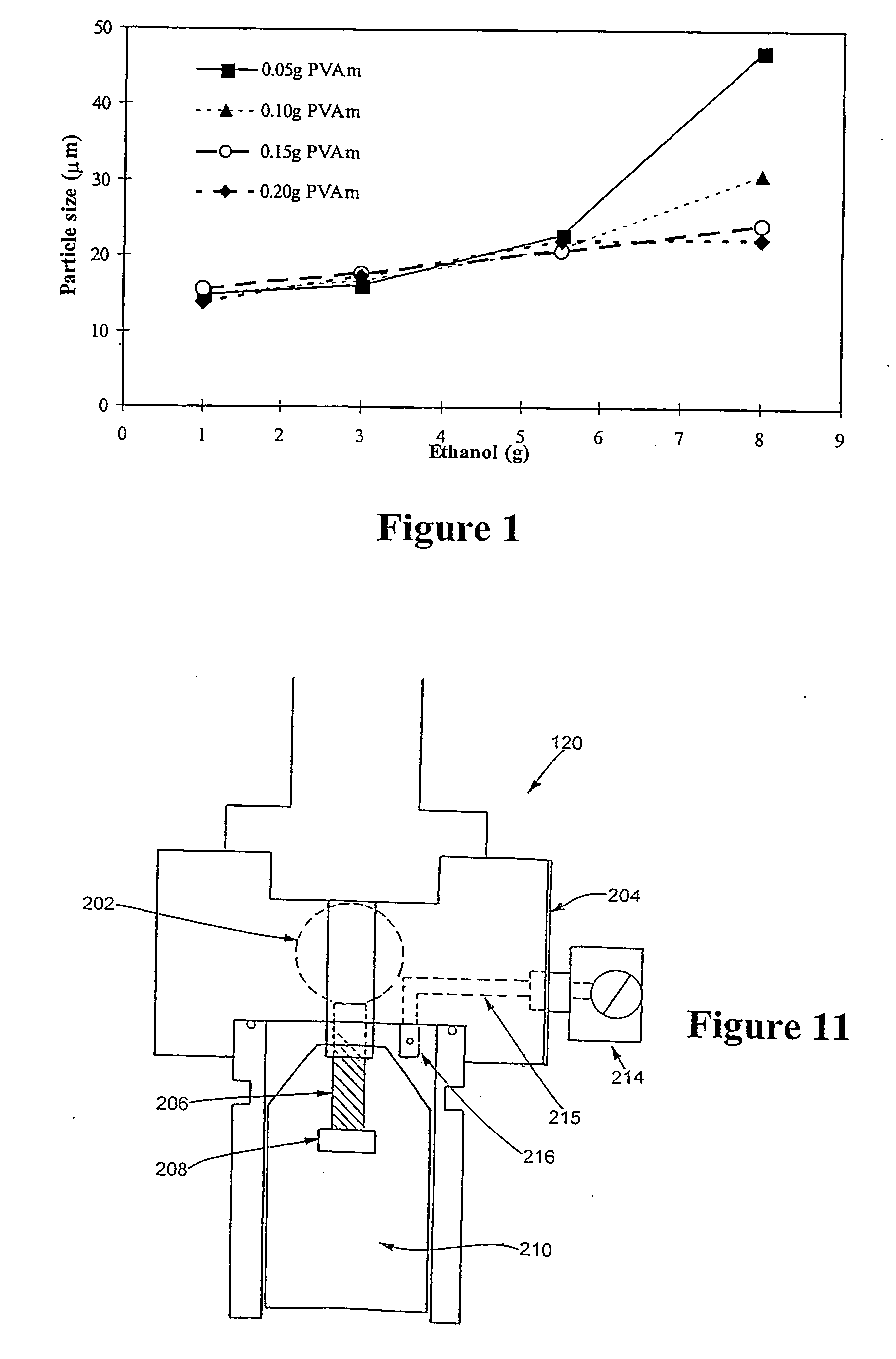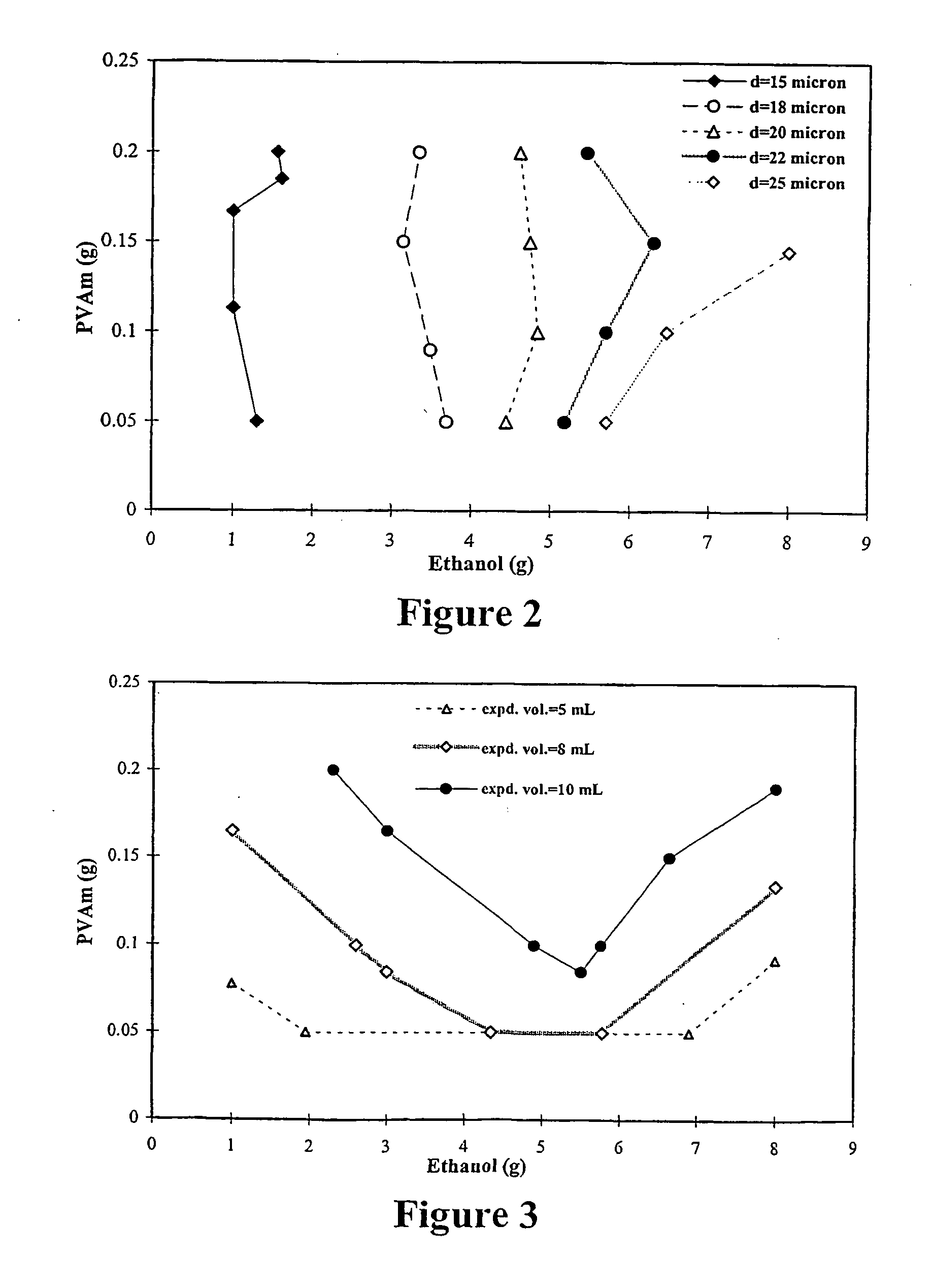Expandable microspheres for foam insulation and methods
- Summary
- Abstract
- Description
- Claims
- Application Information
AI Technical Summary
Benefits of technology
Problems solved by technology
Method used
Image
Examples
example 1
An oil phase was prepared using 69.6 parts of vinylidene chloride, 14.4 parts of acrylonitrile, 4.2 parts of methyl acrylate, 0.2 parts of triallyl cyanurate, 21.6 parts of iso-pentane, and 0.84 parts of 2,2′-azobis(isobutyronitrile). Separately, an aqueous phase mixture was prepared utilizing 120 parts of deionized water, 18 parts of colloidal silica dispersion (30 weight percent solid available under the trade name of “Ludox HS-30”), 0.84 parts of a solution containing 8.2 weight percent of poly(vinyl amine) of 25,000 g / mol molecular weight, and 2.04 parts of a solution containing 2.5 weight percent sodium dichromate. The pH value of the aqueous phase mixture was adjusted between 3 and 4, preferable 3.5 with hydrochloric acid. After the oil and aqueous phases were mixed, the mixture was violently mixed by a homogenizer, OMNI PRO 300 type, available from PRO Scientific Inc. Preferably mixing is at a speed between 6000 and 8000 rpm for 3 to 15 minutes in an ice water bath at temper...
example 2
The procedure of Example 1 was repeated with the exception that there is no triallyl cyanurate in the oil mixture. The obtained microspheres had similar particles size and water content to those prepared in Example 1, and had a maximum volumetric expansion ratio of about 52 times when heated in water bath at a temperature of 80° C., and started expansion at a temperature about 65° C. and sustained at a temperature of 85° C. when heating rate is 6° C. / min.
example 3
The procedure of Example 1 was repeated with the exception that 0.2 parts of triallyl cyanurate was replaced by 0.14 parts of allyl methacrylate in the oil mixture.. The obtained microspheres had similar particles size and water content to those prepared in Example 1, and had a maximum volumetric expansion ratio of about 60 times when heated in water bath at a temperature of 80° C.
PUM
| Property | Measurement | Unit |
|---|---|---|
| Temperature | aaaaa | aaaaa |
| Temperature | aaaaa | aaaaa |
| Temperature | aaaaa | aaaaa |
Abstract
Description
Claims
Application Information
 Login to View More
Login to View More - R&D
- Intellectual Property
- Life Sciences
- Materials
- Tech Scout
- Unparalleled Data Quality
- Higher Quality Content
- 60% Fewer Hallucinations
Browse by: Latest US Patents, China's latest patents, Technical Efficacy Thesaurus, Application Domain, Technology Topic, Popular Technical Reports.
© 2025 PatSnap. All rights reserved.Legal|Privacy policy|Modern Slavery Act Transparency Statement|Sitemap|About US| Contact US: help@patsnap.com



